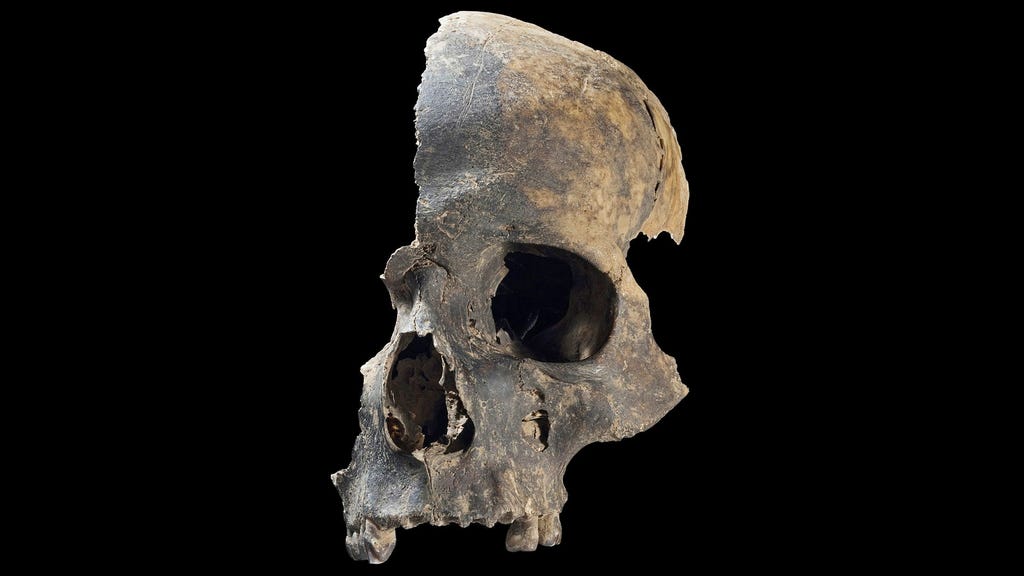The discovery of a 15-meter deep shaft containing the slaughtered remains of at least 37 individuals paints a grim picture of life in Bronze Age southwestern England. The brutal nature of the find, with evidence suggesting the victims were butchered and possibly cannibalized, echoes similar discoveries across Europe and challenges the romanticized view of this period. This gruesome scene offers a stark reminder of the violence and instability that characterized life for many during the Bronze Age, a time often associated with technological advancements and societal developments. The shaft, likely representing a mass grave, raises numerous questions about the nature of the event that led to such a significant loss of life. Was this an act of inter-tribal warfare, a ritual sacrifice, or a desperate act of survival during a time of famine? Further investigation into the context surrounding this discovery is crucial to understanding the complexities of Bronze Age societies and the challenges they faced.
The Bronze Age, spanning roughly from 2500 to 800 BCE in Britain, was a period of significant transformation. The introduction of bronze metallurgy led to the development of new tools and weapons, impacting agriculture, warfare, and social structures. While often perceived as a period of progress, the Bronze Age was also marked by periods of intense conflict and social upheaval. The discovery of the mass grave highlights the darker side of this era, suggesting that violence and instability were as much a part of the Bronze Age experience as technological innovation. The brutal treatment of the bodies, reminiscent of animal butchery, further emphasizes the dehumanizing aspects of the violence and raises questions about the cultural and societal norms that allowed such acts to occur. This discovery provides a crucial counterpoint to the often-idealized image of the Bronze Age, reminding us of the complexities and contradictions inherent in any historical period.
Comparing the archaeological evidence from southwestern England to that of Scandinavia reveals striking similarities in the prevalence of violence during the Bronze Age. Both regions witnessed periods of intense warfare and social unrest, evidenced by fortified settlements, weapon hoards, and discoveries of mass graves and individual burials bearing marks of violent trauma. The widespread nature of such findings suggests that conflict was a recurring feature of Bronze Age life across Europe, likely fueled by competition for resources, territorial disputes, and shifting power dynamics. The presence of apparent cannibalism in both regions further underscores the brutality of the era and raises intriguing questions about the cultural and social significance of such practices. While the exact motivations behind these acts remain elusive, they highlight the extreme conditions that could prevail during this period and the desperate measures that some communities may have resorted to.
The discovery of the mass grave in southwestern England offers a unique window into the lives and deaths of individuals who lived thousands of years ago. Further analysis of the skeletal remains, including age, sex, and evidence of trauma, can provide valuable insights into the demographic profile of the victims and the circumstances surrounding their deaths. Isotopic analysis can shed light on their diets and geographic origins, while DNA analysis can reveal potential kinship relationships and offer clues about the social structure of the community. By combining archaeological data with scientific analyses, researchers can reconstruct a more detailed picture of the events that led to the creation of this mass grave and gain a deeper understanding of the lives and experiences of those who perished there.
The context surrounding the mass grave is crucial to interpreting its significance. The location of the shaft, its proximity to other archaeological sites, and the presence of associated artifacts can provide valuable clues about the nature of the event that led to the deaths of these individuals. Was the shaft located within or near a settlement? Were there signs of defensive structures or evidence of a siege? The presence of weapons or other artifacts within the shaft can offer further insights into the circumstances of the killings. For example, the presence of ritual objects might suggest a sacrificial context, while the absence of such objects could point to a more pragmatic act of violence. Careful excavation and meticulous analysis of the surrounding area are essential for piecing together the events that unfolded at this site and understanding the broader historical context.
The discovery of the mass grave in southwestern England, with its chilling evidence of violence and possible cannibalism, serves as a stark reminder of the darker side of the Bronze Age. While this period is often associated with technological progress and societal development, it was also a time of considerable instability and conflict. The findings from this site, along with similar discoveries across Europe, challenge us to re-evaluate our understanding of the Bronze Age and acknowledge the complex and often brutal realities of life during this era. Further research and analysis of this site and others like it will undoubtedly contribute to a more nuanced and comprehensive picture of the Bronze Age, revealing not only the achievements but also the challenges and tragedies faced by the people who lived during this transformative period in human history.














